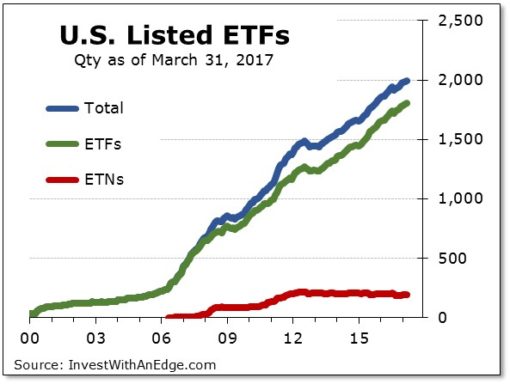Is there any doubt the S&P 500 Index is the most popular investing index in the world? As you probably know, the SPDR S&P 500 ETF (SPY) is the largest ETF on the planet, with $240 billion in assets. However, you may not be aware that the same index is targeted by the second largest ETF, the iShares Core S&P 500 ETF (IVV). In March, the assets in IVV grew to $102 billion, making it only the second ETF to cross the elusive $100 billion threshold.
In the ETF world, where transactions take place on a stock exchange, there is really no need to have multiple ETFs targeting the same index. An exception might be when expense ratios are high, inviting competition, but that doesn’t seem to be the case here. Additionally, the Vanguard S&P 500 ETF (VOO) is a third ETF tracking the same index. VOO is no slouch when it comes to size either, as its $64 billion in assets places it fifth on the largest U.S. ETF list. Therefore, three of the five largest ETFs all track the same S&P 500 Index.
Combined, these three ETFs control more than $400 billion of assets, or more than 14% of the entire U.S. ETF industry. They are the S&P 500 ETF MegaPlex. They grab an even larger share of trading activity. In March, more than $484 billion worth of these ETFs changed hands. That means that 27.9% of all U.S. ETF trading activity is in S&P 500 ETFs. Think about that for a minute. These three ETFs hold $400 billion, yet $484 billion changed hands, for a single-month turnover of 121%. This is not the action of buy-and-hold investors.

In the month of March, 17 new ETFs and ETNs arrived on the scene and 12 closed up shop. Another five had March 31 as their last day of trading, but they will be recorded as April closures. The month-end count of listed products now stands at 1,994, consisting of 1,803 ETFs and 191 ETNs.
Ten of the month’s new offerings are actively managed ETFs, raising their count to 177. Three others fit the smart-beta definition, pushing their total to nearly 700. However, perhaps the most surprising statistic regarding the new introductions is that seven of them are commodity funds.













Leave A Comment